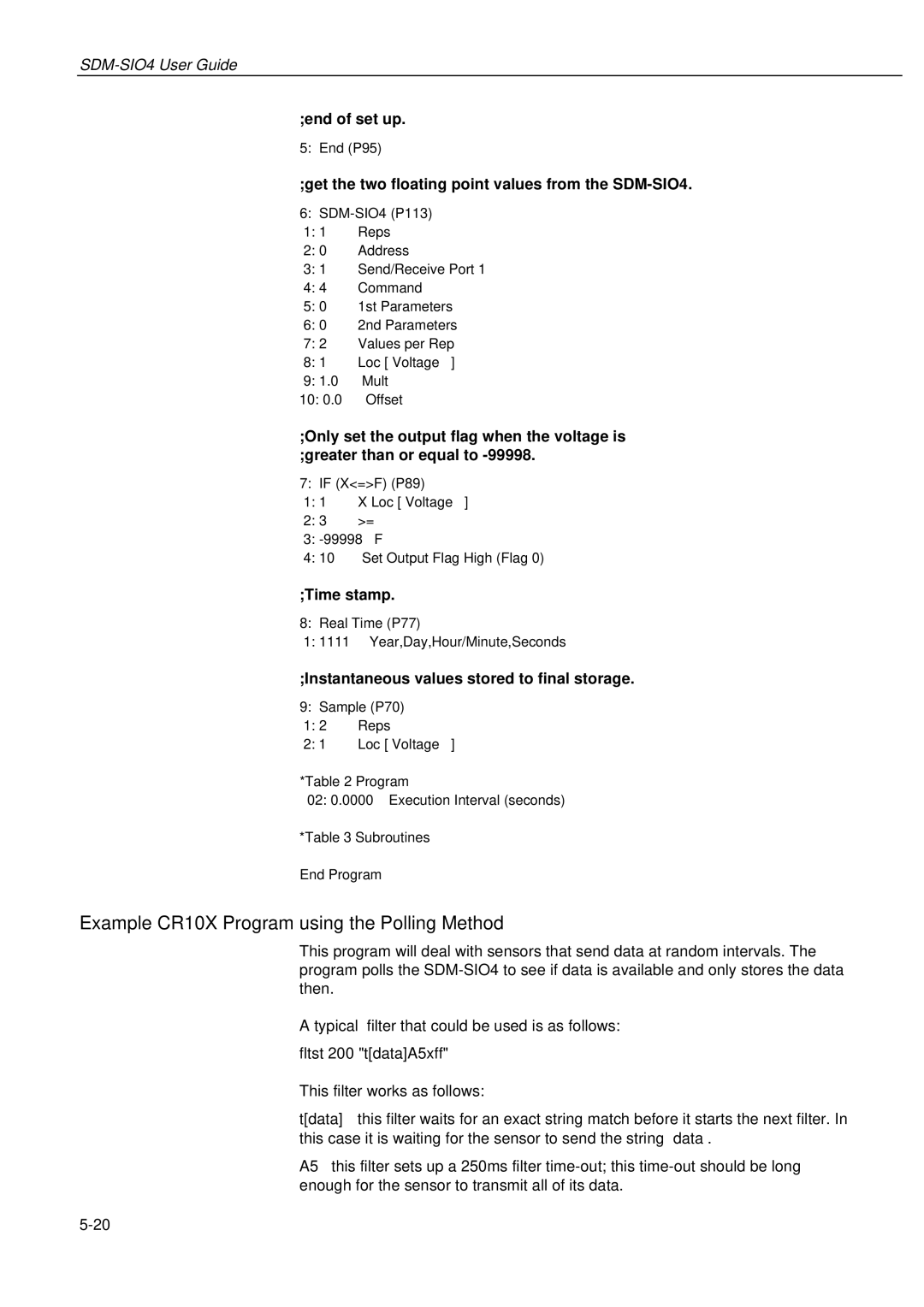;end of set up.
5:End (P95)
;get the two floating point values from the SDM-SIO4.
6:
1: | 1 | Reps |
2: | 0 | Address |
3: | 1 | Send/Receive Port 1 |
4: | 4 | Command |
5: | 0 | 1st Parameters |
6: | 0 | 2nd Parameters |
7: | 2 | Values per Rep |
8: | 1 | Loc [ Voltage ] |
9: | 1.0 | Mult |
10: 0.0 | Offset | |
;Only set the output flag when the voltage is ;greater than or equal to
7:IF (X<=>F) (P89)
1: | 1 | X Loc [ Voltage ] |
2: | 3 | >= |
3:
4:10 Set Output Flag High (Flag 0)
;Time stamp.
8:Real Time (P77)
1:1111 Year,Day,Hour/Minute,Seconds
;Instantaneous values stored to final storage.
9:Sample (P70)
1: | 2 | Reps |
2: | 1 | Loc [ Voltage ] |
*Table 2 Program
02:0.0000 Execution Interval (seconds)
*Table 3 Subroutines
End Program
Example CR10X Program using the Polling Method
This program will deal with sensors that send data at random intervals. The program polls the
A typical filter that could be used is as follows:
fltst 200 "t[data]A5xff"
This filter works as follows:
t[data] – this filter waits for an exact string match before it starts the next filter. In this case it is waiting for the sensor to send the string ‘data’.
A5 – this filter sets up a 250ms filter
